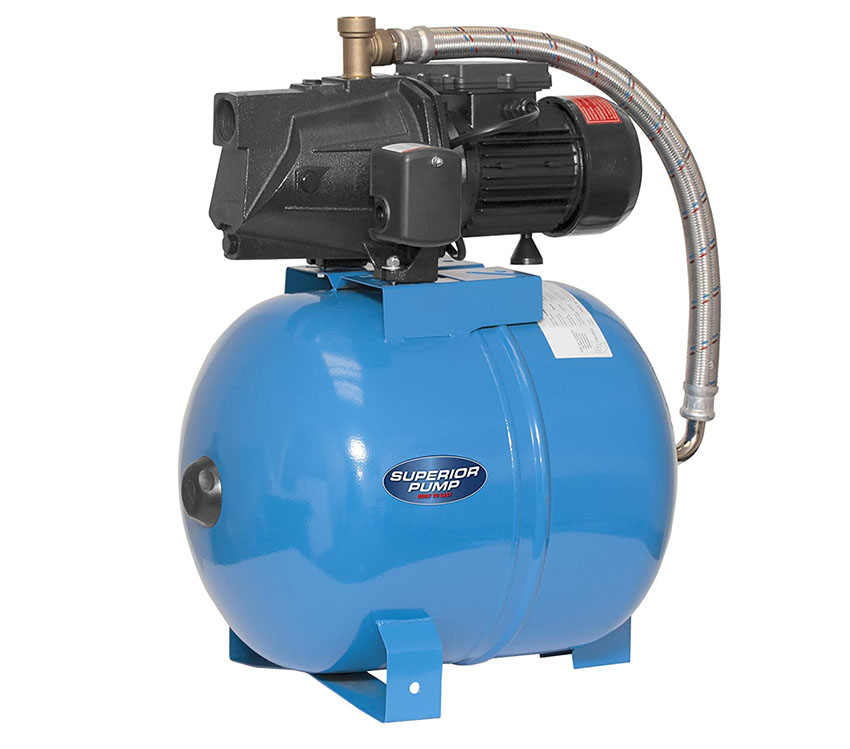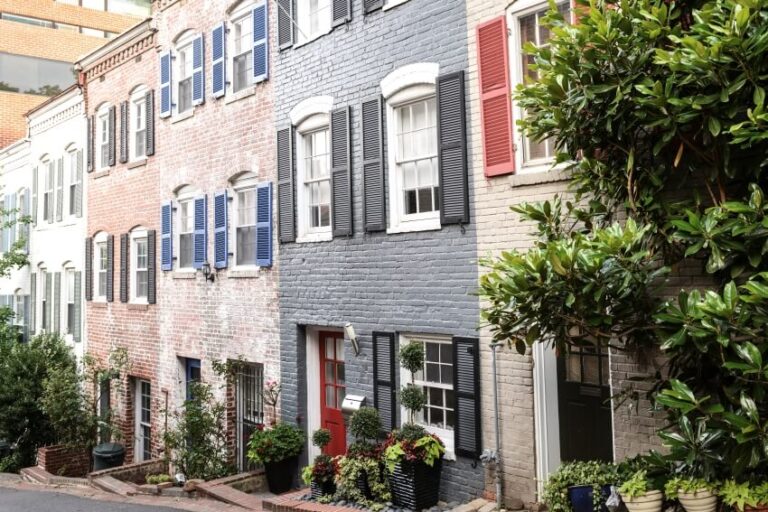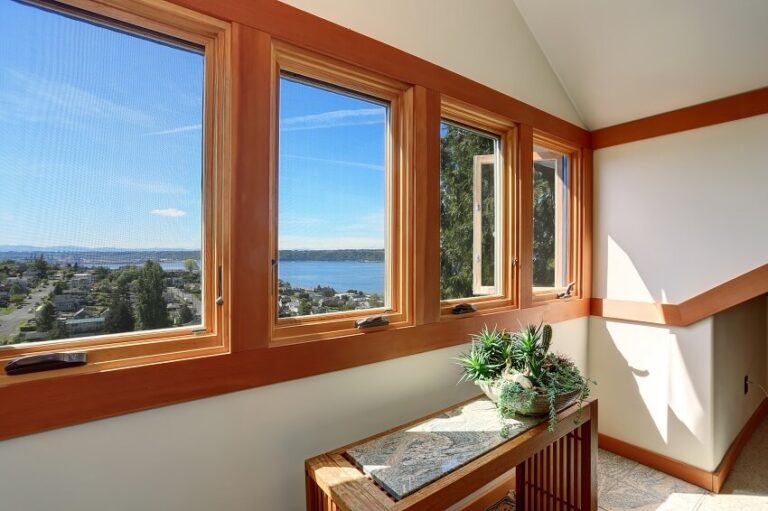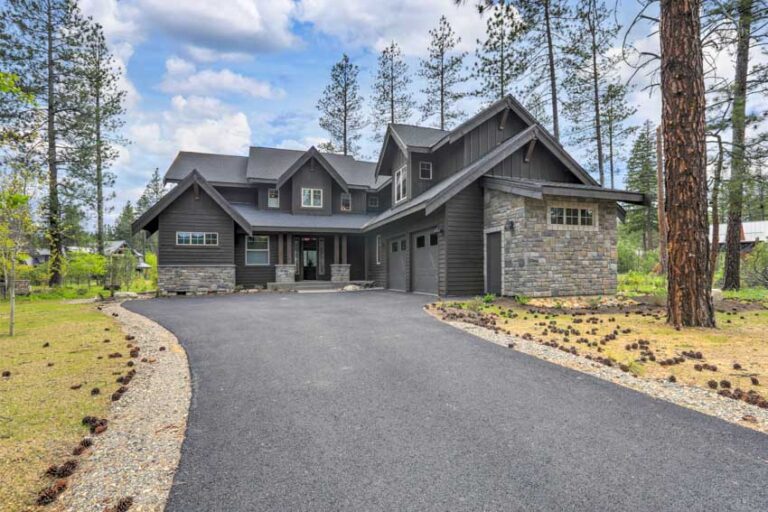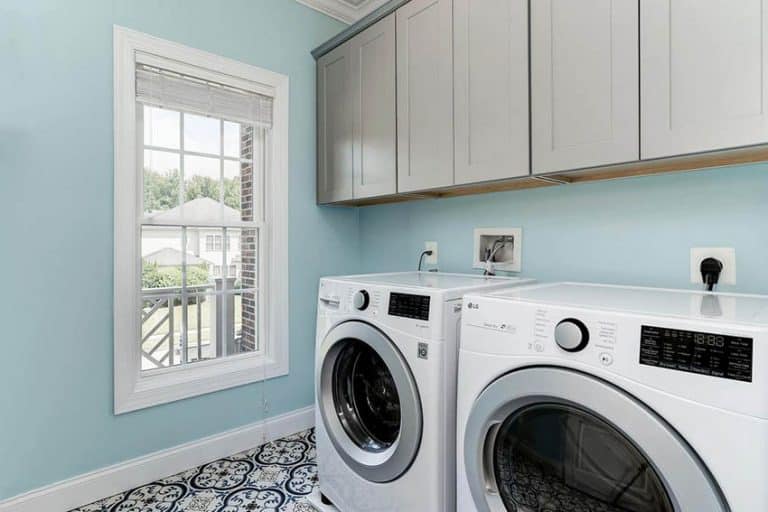Constant Pressure Well Pump (Pros and Cons)
In this constant pressure well pump guide you’ll see what it is, its pros and cons, cost, how long it lasts, and how it compares to standard well pumps.

Water is a primary need for anyone to survive and if you want your home to have a continuous supply of water, it’s necessary that you integrate a tool that can help you maintain one. This is where well pumps come into play. And no, you won’t have to settle with old wishing wells to have a water supply in your home since there have been many radical changes and advancements in the water pumping industry.
One of the two major well pumps you can consider for your home is the constant pressure well pump. This type uses the advancements that have developed in the industry throughout the years. And if you’re planning on installing one for your home, learning everything you can about constant pressure well pumps is an incredible first step. [toc]
What Is A Constant Pressure Well Pump?
A constant pressure well pump is considered the most up-to-date pumping device you can use for your home. Throughout the years, the pump itself didn’t have significant changes, but the controllers that make the unit more convenient to use have drastically improved. And these advanced controllers make the device an incredible option to check out.
The new and advanced pump controllers are also called VFD or variable frequency drives. They are responsible for monitoring water pressure and, at the same time, adjusting pumping speed to accommodate the water demand. They are then able to address the issues that a traditional well pump usually has.
The constant pressure well pump is capable of producing up to 45 gallons of water per minute, giving your household the supply it needs to use your faucets easily and without issues at the same time. It also comes without a pressure tank since the controllers are enough to manage its operations and run more efficiently.
Whether you’re thinking about installing one in your home or your business place, a constant pressure well pump can accommodate your water supply needs well. This type is especially needed in the following cases:
• If your home or business establishment is located in areas where water pressure is low, even if the demand is actually high.
• If you’ve recently added a bathroom and the water demand in your home has increased.
• If you want to reduce your energy bills caused by the fluctuating pressure.
Pros And Cons Of Constant-Pressure Pumps
Constant pressure well pumps are popular for a reason and in order to understand better what you have at hand, skimming and exploring their pros and cons is advisable.
Advantages Of Constant Pressure Well Pumps
To better understand its edge over other options, here are the advantages.
• Steady water supply – Has control over speed so you can strategically decrease or increase the flow rate to match the demand or whenever needed.
• Longer lifespan – Less wear and tear since the machine is not at full speed all the time, even when you are currently using water, and so the stress on the pump is also greatly reduced.
• Saves space and money – Does not require large pressure tanks with the existence of the VFD controllers so you won’t have to worry about buying one or worrying about where to put it.
• Easily supports high water volume needs – This type can pump up to 45 gallons of well water per minute, which is way more than the 15 gallons per minute supply produced by the more conventional device.
• Allows for the possibility of easy expansion in the future – Since you won’t need to install a pressure tank in the mix, you can expand more conveniently without worrying about sensors or tanks.
• Helps you save energy consumption and lower your utility bills – The premise is that since the unit doesn’t always run at full speed with the control, you’ll be able to save from energy consumption and even help you save money with your bills.
Disadvantages Of Constant Pressure Well Pumps
With all of the positive characteristics, there are also several drawbacks you have to consider before making a decision. Here are some that are worthy of your attention.
• Requires professional installation – This type needs a technician with enough experience and a high level of expertise for its installation, especially with adjustments and meticulous setup.
• Not ideal for locations with frequent power outages – With little reserve water available with the absence of large tanks, you will have a problem with the water supply once the electricity is off so if you have the budget and space, install a tank anyway just in case.
• Expensive repairs and replacement – If your constant pressure well pumps act out, hiring an expert to fix it for you may be expensive (You might need to pay $200 to $300 for a pressure switch and control box failure).
Pressure Regulating Pump Systems
In order for a well pump to run efficiently, it needs a power system to support it. This system is able to provide steady water pressure into your home without fluctuations that usually come with traditional well pumps. The water supply will adjust with the changes in the flow demand.
This system has a motor speed that allows the unit to maintain its constant pressure. Its submersible pumping operation pushes water to a drop pipe with a check valve that keeps the water from coming back to the well.
It also includes a sensor that indicates when it should be turned on and a drop trigger mechanism that allows the machine to handle a high volume of water pressure.
Self-Adjusting Pressure Pump Kit
See this water well kit at Home Depot [sponsored link]
If you’re thinking about getting a constant pressure well pump, you can consider checking out kits that are available on the market. These kits usually include all the parts you need to build your own well pump like the controller and transducer that allows the pumps to operate in constant and steady pressure.
Pressure tanks may also be included in the kit but they are usually sold separately so make sure to check out the components that the kit includes.
Dynamic Pressure Water Pump Cost
One of the major considerations you have to take into account when deciding on a constant pressure well pump is the cost that it comes with. On average, installing this type of well pump can set you back around $2,000 to $5,000, depending on the kit and parts you’ve chosen and the installation fees.
A constant pressure well pump uses a variable frequency drive for its controller that’s responsible for the pump’s speed. This costs around $800 to $2,900 without the installation fees and labor costs. And that’s just for the installation of a new unit and system.
You also need to take into account the maintenance, repairs, and replacements that you will need to pay for throughout the years.
If you want to have an idea of the possible labor costs you might encounter, here are some well pump service rates you should know.
| Projects/Services Rendered | Costs |
| Well pump replacement | $250 to $800 (For projects costing above $1000) |
| New wire installation | $200 per project |
| Piping | $200 per project |
| Pressure switch & control box failure | $200 to $300 per project |
| Controller replacement | Around $1,200 |
| Plumber services and charge | $45 to $150 per hour depending on the service |
Controllers can last around 10 years, so if you’re planning to use your device for a long time, prepare to pay for its replacement every after a decade. In addition to that, other parts also need to be removed and replaced like the submersible pump and even the pipes themselves.
How Long Do Pressure Regulating Pumps Last?
Constant pressure well pumps can last around 8 to 15 years so if you’re planning on having one, make sure you know what you’re getting.
There are also parts that would need replacement after a decade of usage. But if you really want to maximize its usage, you need to consider the factors that can affect the lifespan of your device. Here are some of the factors:
• Well Pump Quality – Truth be told, cheaper pumps tend to be less durable and may easily succumb to the daily operation’s wear and tear and so may not last compared to other costlier pumps.
• Pump‘s Power Quality – Using incompatible power voltages and phase imbalances can reduce the pump’s lifespan and even completely destroy it, so make sure you’re using just the right amount of voltage to operate your device using the appropriate phase.
• Duty Cycle – A well pump can last longer if it only runs intermittently or only when it’s necessary compared to one that has a continuous duty cycle. For the former, the pump’s motor will have time to rest, while the latter will only wear out the motor quickly.
• Proper System Installation – While installing the pump yourself can save you a lot of money, it can lead to poor installation and may result in your unit having a lot of issues early on and even lead to premature failure. This is why choosing a component professional to do it for you is still the best option.
• Water Quality – If the local water is pure and clear, you can expect your pump to have a long lifespan. If it has a high mineral content, expect to reduce its lifespan since these components can cause wear and tear.
Demand-Based Pump Problems
A constant pressure well pumps are a product of technological advancements, but despite the upgrades they offer, there are still challenges you need to know when considering having one for your home. Some of the issues you might face are the following:
• Voltage and phase mismatch – On the get-go, you need to choose the right components for your device to operate efficiently, and often, power and phases are the two factors that are often mismatched leading to early failure.
• No water supply during outages – If you’re not confident about your electric company, make sure to have a pressure tank along with your pump. While it’s not needed for the pump’s operation, you will need it to have a water supply during outages when the unit won’t be operational.
There are more issues you can expect if you don’t install or operate your well pump the way that you should, which is why you need the help of an expert to install the device for you and educate you on the proper use and operation of the kind you have.
Pressure-Sensitive Pump Vs Standard Comparison
To better understand what you will have when you choose a constant pressure well pump, comparing it with the standard and traditional versions is necessary. Here is a summary of their differences:
| Element/Aspect | Constant Pressure | Standard Pressure |
| Water Supply | Up to 45 gallons per minute | Up to 15 gallons per minute |
| Water Pressure | Precise, quiet, & quickly adjusts to fluctuations | Possible severe fluctuation |
| Pressure Tank | Recommended not required | Required for operation |
| Cost | More expensive | More affordable |
| Maintenance | May not require as much upkeep | May need more meticulous maintenance and looking after |
| Diagnostics | Highly refined diagnostic system | More mechanical diagnostics |
| Space Requirement | Saves more space since it operates without a tank | Requires more space to accommodate a tank |
| Startups & Stops | Fewer and so reduces wear and tear | More startups and stops, depending on the demand |
There are many positive features you’ll appreciate with these constant control pumps, but bear in mind that they need accurate calibration and won’t be operational during outages so if you are located somewhere outages are frequent, you may need a pressure tank along with your well machinery.
On the other hand, the standard pressure well pump may be used by small households that do not require high demand. So if that fits you, the standard can still be considered.
Visit our heat pump water heaters pros and cons guide for more related content.


